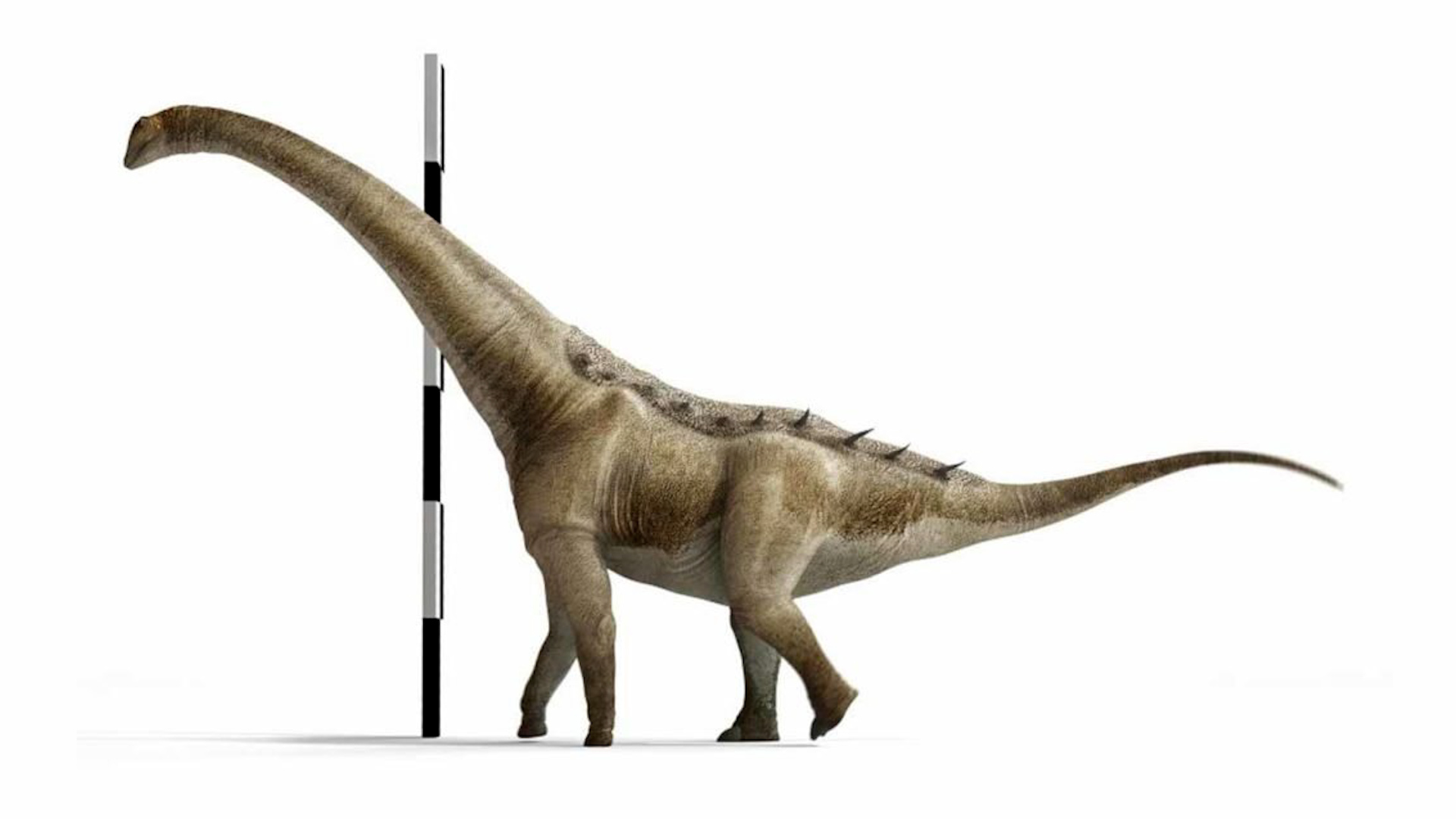
Jack Aylmer
A NEWLY DISCOVERED DINOSAUR SPECIES IS NOW ON DISPLAY AT A NATURAL HISTORY MUSEUM IN SPAIN.
THE QUNKASAURA (KUNK-A-SOR-A) PINTIQUINIESTRA IS A NEW TYPE OF TITANOSAUR.
IT WAS FOUND AT THE LO HUECO FOSSIL SITE AND LIVED AROUND 73-MILLION-YEARS AGO.
THE NEW PUBLIC DISPLAY COMES AFTER NEARLY TWO DECADES OF CAREFUL STUDY AND INVESTIGATION.
THE NAME HONORS THE TOWN OF CUENCA, SPANISH PAINTER ANTONIO SAURA AND QUEEN PINTIQUINIESTRA.
IN 2007, THOUSANDS OF FOSSILS WERE UNCOVERED WHILE WORKERS WERE BUSY LAYING TRACKS FOR A HIGH-SPEED TRAIN BETWEEN MADRID AND VALENCIA.
RESEARCHERS SAY THEY WERE ABLE TO IDENTIFY THE CREATURE BY ITS UNIQUE TAIL STRUCTURE, A SIMILAR FEATURE SEEN IN OTHER TITANOSAURUS FROM SOUTH AMERICA. RESEARCHERS DO BELIEVE THIS INDIVIDUAL LIKELY DIED BEFORE REACHING FULL SIZE.
USUALLY ANIMALS IN THESE ENVIRONMENTS TEND TO BE SMALLER DUE TO LIMITED RESOURCES, BUT QUNKASAURA DEFIES THAT TREND. RESEARCHERS ARE STILL INVESTIGATING WHETHER THIS SPECIES MIGHT HAVE ORIGINATED IN ASIA OR NORTH AMERICA.
THE RESEARCHERS ARE STILL ANALYZING OTHER FOSSILS FROM THE SITE, AND MORE SPECIES ARE EXPECTED TO BE IDENTIFIED.
AS OF NOW, THE SPANISH GOVERNMENT HAS PROTECTED THE REMAINING AREAS OF LO HUECO, AND FUTURE DIGS MAY REVEAL EVEN MORE FOSSILS.
I’M JACK AYLMER
FOR ALL YOUR LATEST NEWS HEADLINES – DOWNLOAD THE STRAIGHT ARROW NEWS APP TODAY.











